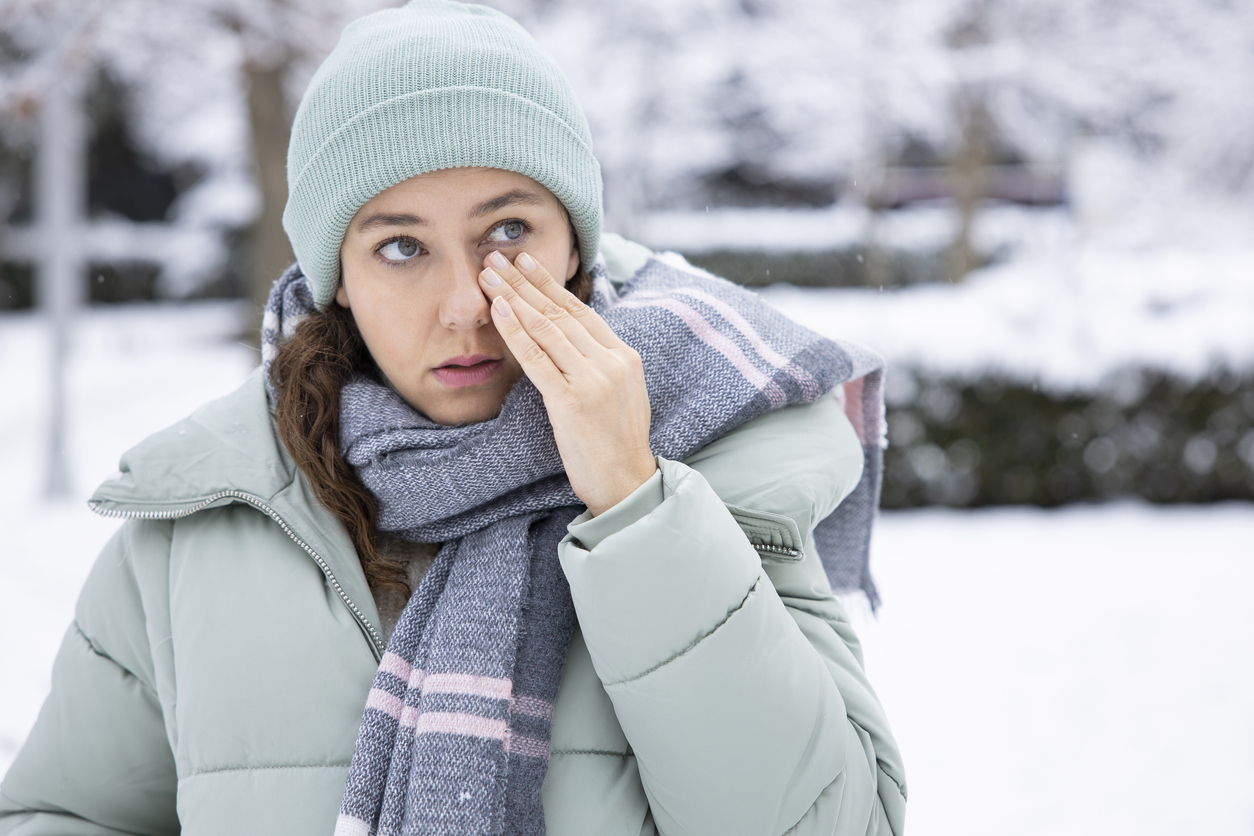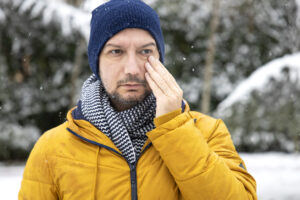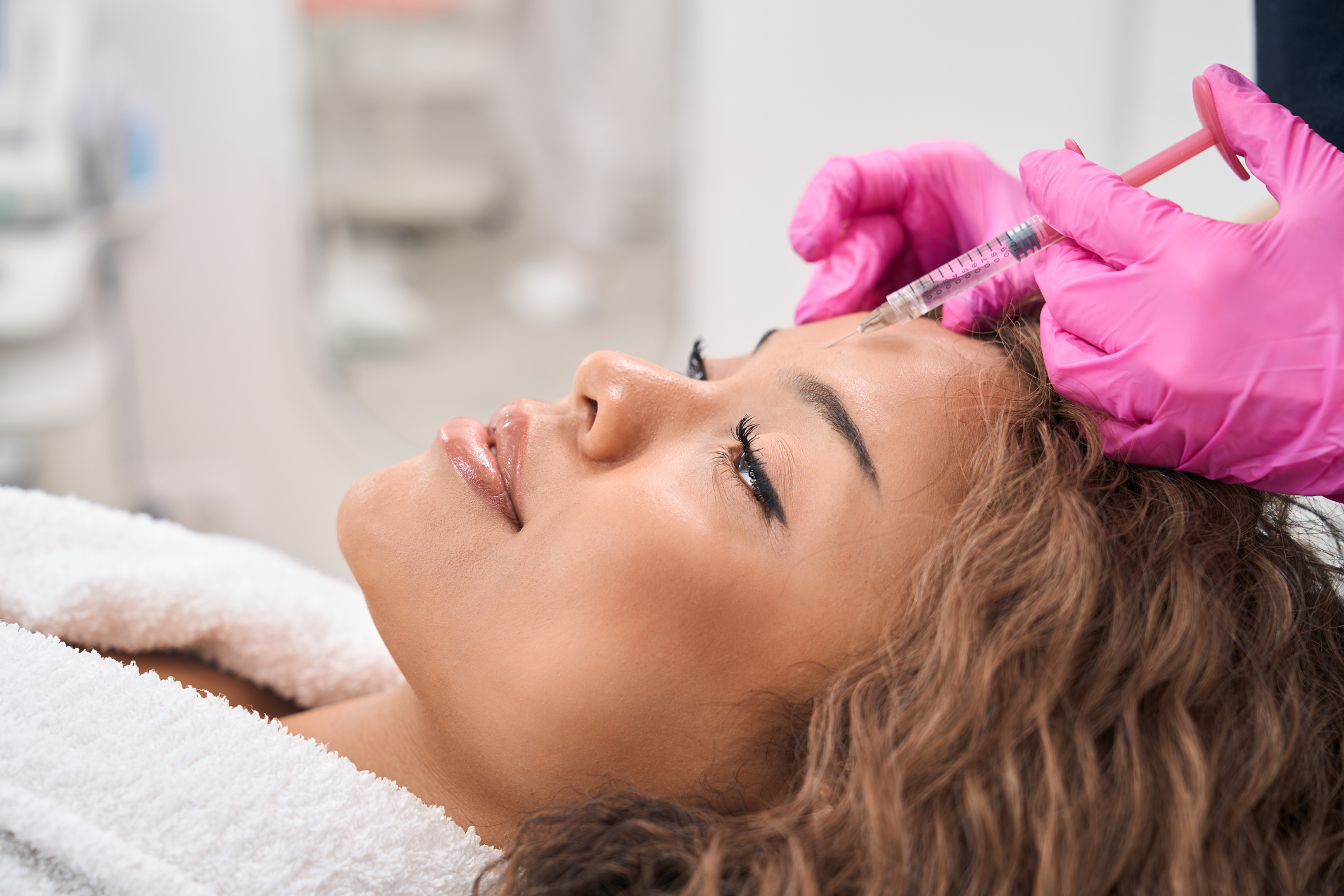Seasonal allergies can be a real nuisance, especially when they affect your eyes. The itching,…

Managing Dry Eyes in Winter: Tips and Treatments
As winter descends and the temperature drops, many people begin to experience the uncomfortable symptoms of dry eyes. At Henderson Eye Care, we understand the challenges that come with this seasonal issue. In this blog post, we’ll delve deeper into why dry eyes become more prevalent during the colder months, share some simple yet effective tips to alleviate discomfort, and discuss potential treatments available for those suffering from this condition.
The Science Behind Dry Eyes in Winter
Dry eyes occur when your eyes don’t produce enough tears for adequate lubrication, or when the tears evaporate too quickly. This imbalance in tear production and retention can lead to an array of discomforting symptoms.
Winter tends to be a particularly tough time for those prone to dry eyes. The cold outdoor air often holds less moisture than warm air, creating harsh, drying conditions. While indoors, heaters used to keep us warm contribute to reducing humidity levels, leading to dry and sometimes itchy eyes.
Symptoms of dry eyes in winter can range from mild to severe and may include a stinging or burning sensation, redness, sensitivity to light, a gritty feeling like something is lodged in your eye, and in some cases, blurred vision. If you’re experiencing these symptoms persistently, it’s crucial to seek professional help.
Practical Tips to Manage Dry Eyes in Winter
Here are a few practical tips to help manage dry eyes in winter:

- Stay Hydrated: Hydration is key for overall health, including eye health. Make sure you’re drinking plenty of fluids throughout the day to help maintain moisture in your body and eyes.
- Use a Humidifier: A humidifier can add much-needed humidity to dry indoor air, helping to keep your eyes lubricated.
- Wear Sunglasses: Sunglasses can serve as a shield against the cold wind and reflective snow, providing an extra layer of protection for your eyes when you’re outside.
- Take Frequent Breaks: If your job or lifestyle involves substantial screen time, remember to take regular breaks, following the 20-20-20 rule: every 20 minutes, look at something 20 feet away for 20 seconds.
- Avoid Direct Heat: While it may feel good, sitting directly in front of a fireplace or a heater can dry out your eyes. Try to keep a safe distance from direct sources of heat.
Professional Help at Henderson Eye Care
At Henderson Eye Care, we offer comprehensive eye exams that can accurately diagnose dry eyes in winter and other eye conditions. Dr. Pamela R. Henderson will meticulously evaluate your eyes and recommend the most effective treatments tailored to your specific needs.
Treatment options can range from simple eye drops for immediate relief to specific medications designed to increase tear production. For more severe cases, minor surgical procedures may be considered to prevent tears from draining away too quickly.
In addition to treatment, we’re here to provide personalized advice on how to protect your eyes in winter and all year round. We believe that patient education is a vital component of eye health, and we’re committed to helping our patients understand their eye conditions and how to manage them effectively.
Managing dry eyes in winter can be a challenge, but with the right care and precautions, you can maintain your eye health and comfort. The cold months don’t have to be a struggle for your eyes. If you’re experiencing symptoms of dry eyes, don’t hesitate to reach out to us at Henderson Eye Care. We’re here to help you navigate the challenges of winter eye care and ensure your vision remains clear and comfortable, no matter the season.



